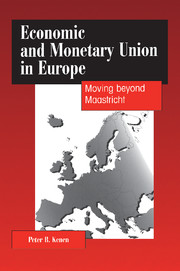8 - Getting on with EMU
Published online by Cambridge University Press: 20 May 2010
Summary
Events and issues examined in Chapter 7 raise two questions. Is the case for EMU stronger or weaker than it was when the Maastricht Treaty was adopted? What might be done to make sure that an appreciable number of EC countries will be able to enter Stage Three in 1999, when it is due to start automatically? This chapter answers those questions.
The case for EMU
When asking whether EMU would be a good thing, one must first answer the economist's favorite question: “Compared to what?” Until recently, EMU was often compared with the “hard” EMS that prevailed from early 1987 until September 1992. Today, it should be compared with the wide-band EMS born in August 1993. The two benchmarks are quite different and thus pose different questions.
Comparing EMU with the hard EMS
When EMU was compared with the hard EMS, there was little point in asking whether Europe resembles an optimum currency area – whether the EC countries are likely to suffer large asymmetric shocks, and whether price flexibility and labor mobility are sufficiently high to limit the costs of adjusting to those shocks.
Exchange rate changes were not ruled out under the hard EMS, although governments had renounced them to preempt speculative attacks, and they were successful until 1992. Their success, however, was largely due to the growing expectation of a “seamless” transition to EMU and the concomitant belief that external imbalances would hence forth be corrected by changing domestic policies rather than changing exchange rates.
- Type
- Chapter
- Information
- Economic and Monetary Union in EuropeMoving beyond Maastricht, pp. 177 - 194Publisher: Cambridge University PressPrint publication year: 1995



